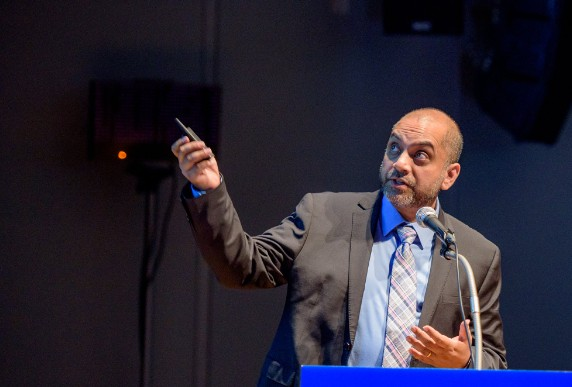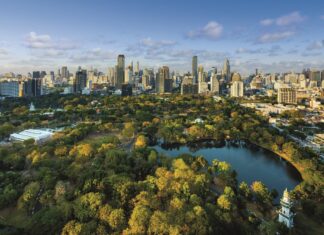Inspired by the animal kingdom, Sudhir Murthy explains how to integrate infrastructure with digital solutions.
Many go through life neither knowing nor caring where their sewage goes or what ultimately happens to it. But Sudhir Murthy had already figured that out by the age of six, while touring a treatment plant his father was building in India.
And he has not lost any interest in the creative processes required to resolve public health, human needs and natural functions. It is uniquely satisfying to be a trained water engineer, he says, because it “positively impacts the environment on an immediate, daily basis.”
Where some shrink from a global water and sanitation crisis, Murthy anticipates a potential golden age for solving it. The urgent need for water, he says, “requires engineering resources by using our human capacity to build and maintain infrastructure that can absorb climate change, population growth and rapid urbanisation, and opportunities in the water sector are quite unlimited.”
Today’s water leaders will get the chance to learn from and build upon the pilot era of the last century’s foundational water infrastructure that served less than a billion people predominantly in the West to serve three to four billion or more worldwide. The lessons will be found by looking beyond our immediate past and current focus.
“We need to solve local problems,” says Murthy. “But if – through the catalyst effect from IWA – we see what’s happening elsewhere, around the world, right now, the solutions may look different.”
That dual outlook is manifest in his professional life. Locally, as CEO of NEWhub in Washington, DC, he leads the development and continuous improvement of water innovation strategies. Globally, through his appointment to the board of directors of the International Water Association, among other thought leadership positions, Murthy helps develop policies and principles that drive innovation within water utilities in all habited continents across the world.
In both cases, Murthy reaches past new tools to instill a broader “culture of innovation” that laterally links scientific research through organic processes, sustainable outcomes and easily recognizable analogies for dissemination.
The power of technological innovation adds value by linking three scales that Murthy calls metaphorically the elephant, the horse, and the hare.
The “elephant” – which he compares to concrete water assets such as dams and tanks in a plant that are part of a hydraulic profile, and other long-lived infrastructure – may require a decade of technology gestation, but then lives a century. A ‘horse’ – think pump, motor, mixer, screens — gestates for only a few years and lasts a few decades.
Then there’s the new group, the ‘hares’ – think sensors, analytics, artificial intelligence, iPhone apps – smart water technologies that take only months of gestation, yet become obsolete after only a few years. “So what innovation managers need to do in the water sector is bring all these together into one place and make them work as a cohesive whole,” says Murthy.
So rather than view integrated technology in “verticals” – where one obsolete piece may delay the replacement of an integrated device or technology,- we need to “supply, procure, implement and replace” technology in horizontals, building and upgrading concrete infrastructure for the long-term, and with more frequent repurposing a tank’s mechanics regularly enhanced by smart water devices that keep the system efficient and productive much longer”. One can better understand the different pace of innovation of different technologies in the water sector, rather than bemoaning the slow overall pace of water innovation.
Ultimately, lateral integration also extends to the distributed and natural “green infrastructure,” which is “more malleable, allowing for changes and improvements that link the utility through transition into the everyday life of a city”.
Adapting and integrating the elephant, horse and hare technology in the water sector feels disruptive, and a bit scary. Yet it also feels, to some extent, inevitable.
Murthy sees innovation as being more rapidly dispersed in Asia, due in large part to necessity, as on average one new water or wastewater treatment plant is being built every day. “As populations grow wealthy they demand a higher quality of life and will expect a higher quality of service,” he says. “Change is progress, making a difference, bringing value to the world community and in the case of water, it is all about how to transition seamlessly from past approaches to future possibilities.”








